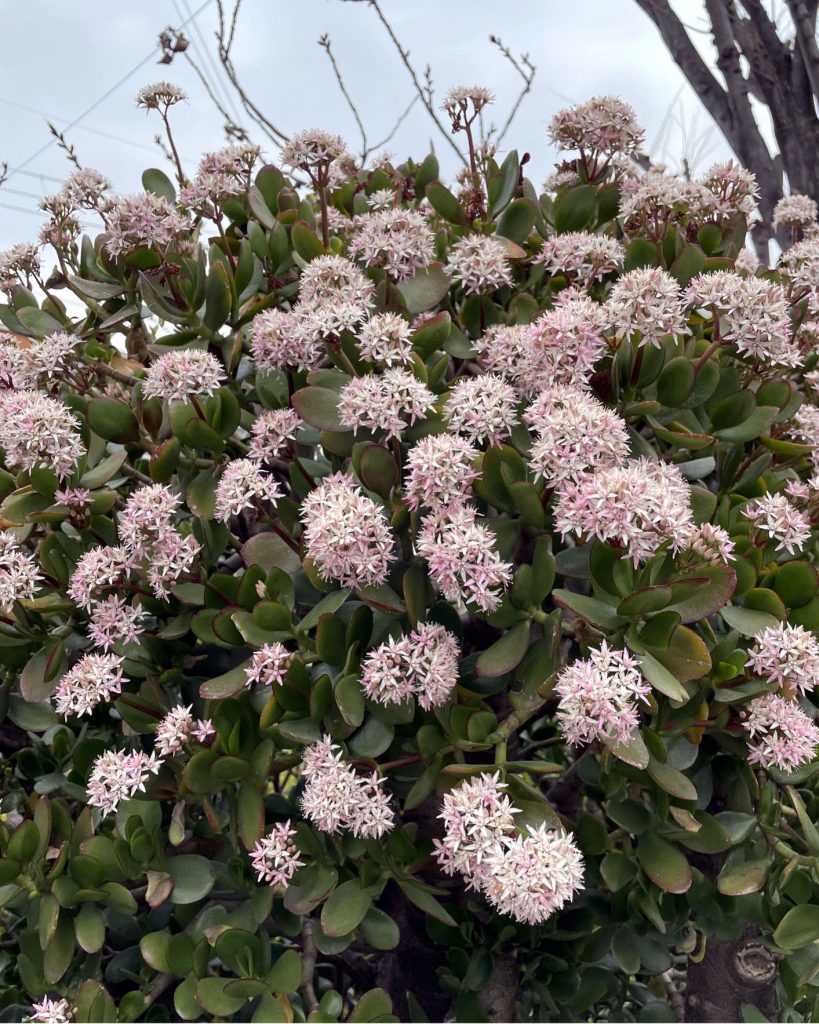
On my way back from the hospital, I saw some cute flowers blooming. These flowers are formally called Crassula portulacea, but are known by names such as “money tree” or “gold coin plant”. When the plant was trendy, people would pass a five-yen coin through the small sprout hole and let it grow, eventually shaping the branches to look like they had money growing on them. The plant is native to South Africa and Madagascar, and was introduced to Japan in the early Showa period. Because the leaves resemble coins, the plant is also known as “money tree” or “dollar plant” in English. It seems that a gardening company noticed this and created the decorative technique described above, naming it “money tree” or “gold coin plant” and selling it as a kind of good-luck charm.
病院からの帰り可愛い花が咲いていました。この花は、正式にはクラッスラ・ポルツラケア(Crassula portulacea)といいますが、「金のなる木」とか「成金草」の名で知られています。新芽が小さいうちに5円玉の穴に通しておき、そのまま成長させて、5円玉が抜けない状態にして、枝にお金がなったように仕立てたものが流行したことからこんな名が付きました。南アフリカやマダガスカルに分布していて、日本には昭和初期に渡来しました。葉がコインに似ていることら、英名でマネーツリーとかダラープラントと呼ばれていたので、これに目をつけた園芸業者が上の様な細工をして、一種の縁起物として「金のなる木」とか「成金草」と名付けて売り出したのでしょう。
